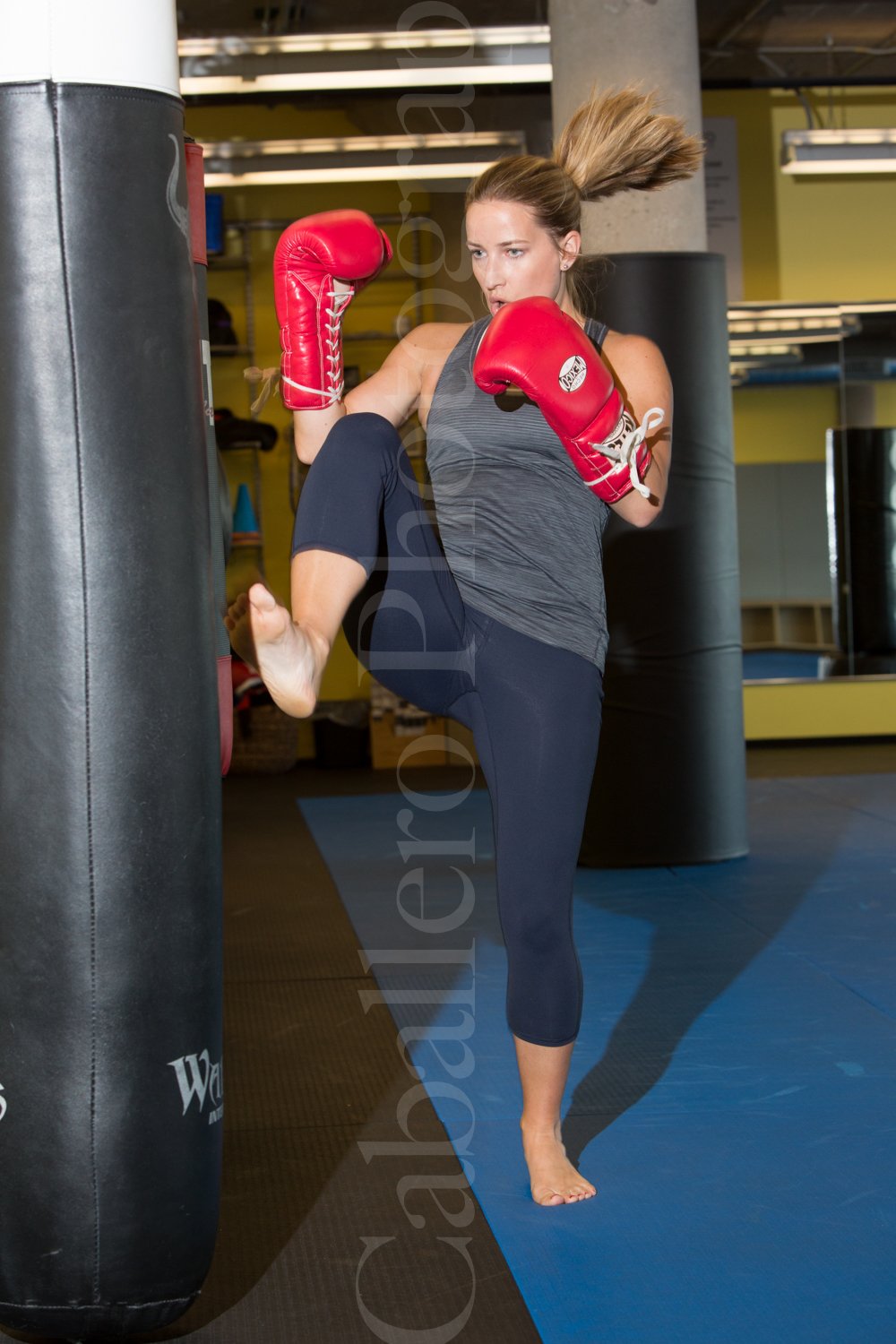What’s the difference between a fitness kickboxing class and a kickboxing class?
When we look at fitness magazines these days, we see a lot of images of people doing kickboxing movements and fitness kickboxing related exercises. Kicking and punching is tons of fun and can provide an incredible workout at the same time. That’s why people want to incorporate kickboxing into their workouts. It keeps people motivated because they’re having fun while they’re doing it. Let’s face it, hitting stuff feels great; it’s fun & relieves stress.
Fitness Kickboxing is a great way to workout.

Many larger fitness facilities incorporate cardio kickboxing classes into their group exercise class schedule so that members can take advantage of this type of training. Cardio Kickboxing classes generally incorporate punching and kicking movements as a group along with calisthenics and whole body exercises.
There are also dedicated fitness kickboxing facilities that that specialize in workout classes for fitness / weight loss. These usually have lots of bags and equipment for their group classes which incorporate bag work, etc. The classes normally consist of timed intervals (rounds) punching bags mixed with calisthenics and whole body exercises.
A Kickboxing class teaches you fighting techniques and strategy.
Like boxing, Kickboxing is a sport which grew from martial arts. There are actually a number of different styles/types of kickboxing with different rules. A sport has rules and safety equipment which let competitors compete safely within the particular style.
A kickboxing class actually teaches you fighting techniques i.e. punching kicking, footwork, blocking and defense, counters and strategy. This would normally be at a martial arts school where an instructor would teach a methodical step by step curriculum to teach students kickboxing techniques and strategies. A martial arts school would normally have a dedicated facility with more specialized equipment for training. Of course, physical conditioning and flexibility are very important to progress, so these classes would normally be a very challenging workout, but would also spend time teaching proper technique so that students can build their skills. As students build a repertoire  of techniques in their muscle memory, they are able to put them together smoothly and take their training to the next level. Students would do partner drills with their training partners to learn footwork and movement relative to an opponent and they might hold targets (pads) for their training partners.
of techniques in their muscle memory, they are able to put them together smoothly and take their training to the next level. Students would do partner drills with their training partners to learn footwork and movement relative to an opponent and they might hold targets (pads) for their training partners.
As students progress, they may begin doing sparring drills with one another to learn how to field punches and kicks coming at them and to counter them. Again, a good school should have a step by step curriculum to guide students as they progress.
Which is right for you?
If, like many people these days, you’re interested in incorporating some kickboxing movements into your workout routine, you might try some cardio kickboxing or maybe some type of fitness kickboxing class. If you are only interested in the fitness aspect of kickboxing you might find that an actual kickboxing class is just too much information for you (learning proper form, footwork, fighting strategies, etc). Kickboxing and martial arts have a much higher profile these days in movies, etc., but as a friend of mine once said:
“A lot of people want to do martial arts (kickboxing is a martial art), but a smaller number actually want to learn martial arts.”
If you’re an individual who enjoys the challenge of learning a skill that will really help you to stay in top shape, learning martial arts / kickboxing might be just the thing for you. If you are working with a good instructor it should be perfectly safe with no more risk of injury than any other physical activity.
If you try a fitness kickboxing class and you enjoy it, you may feel like you’d like to take it to the next level. Even if you have no intention of ever fighting, you will find that in order to take it to the next level, you’ll want to learn your skills properly. As you do a lot of punching and kicking, you are building muscle memory (habits). In order to build skills, you will need a good foundation. If you do thousands of punches and kicks (which you will do in just a few classes) and you do them incorrectly, it will make it more difficult to progress or break those habits later. If you enjoy doing fitness kickboxing classes, it pays to find a class that will get you started on the right foot so that you’ll be able to progress.
Stick to the simpler movements at first like straight punches (jab and cross) and try to do them as well as you can. This is plenty challenging for a while will allow you to get a great work out. Often it’s best to save more complicated movements (eg. uppercuts and hooks) for later. Much like weight training or most physical training, in order to do it safely and to get maximum benefits you’ll want to learn to practice with good form.
Other benefits
The other important aspect which really differentiates a great workout is the mind-body connection. When we are totally focused and immersed in what we are doing, we get maximum physical and mental benefit. This focus not only helps us to build our technique, but it helps to calm our minds and relieve stress. If we perform any activity mindlessly (think walking or running on a treadmill while reading a magazine or checking e-mails) we get very little benefit. A good kickboxing class should provide this mind-body connection, but this is strengthened considerably when we have trained the movements precisely, and have our minds that much more engaged in what our bodies are doing.
